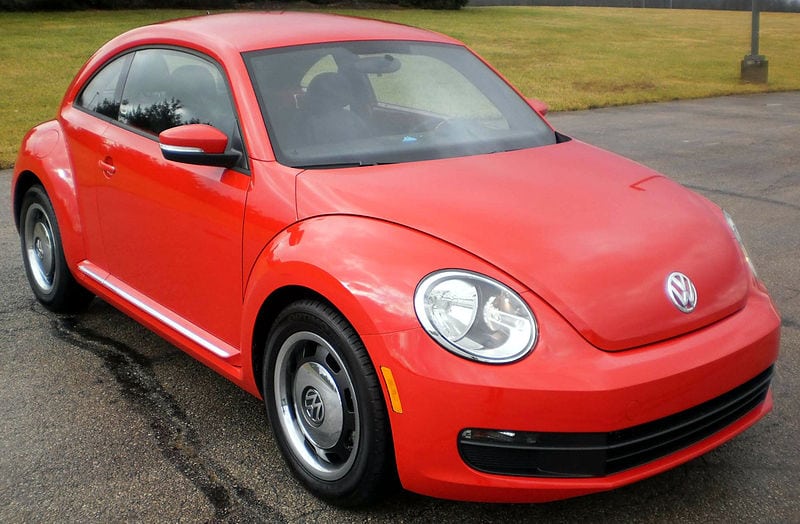The Volkswagen Beetle is a world-famous and iconic vehicle. First developed by Ferdinand Porsche at the behest of Adolf Hitler back in the late 1930s, the Beetle is now in its third generation.
In today’s review, I test drive a Volkswagen Beetle “Design,” which has one of Volkswagen’s super-efficient 1.2-litre TSI engines. If you are thinking of buying the current generation Beetle soon, this blog post is for you!
On the road
Perhaps the glaringly obvious difference between the current generation Beetle, the “A5”, and its predecessor, the “new” Beetle, is that the roof is somewhat lower down on the current models.
When you get behind the wheel of the Design, you can’t help but feel that you are driving an American Hot Rod in some respects! The windscreen is quite wide but isn’t particularly high, nor is it sloped like most other cars.
Still, that fact isn’t necessarily a negative point for the Beetle. Driving the car is surprisingly effortless, despite the fact that the model I drove, the Design, featured a 1.2-litre 8-valve TSI engine.
The Beetle Design feels very solid on the road, partly because of the fairly stiff suspension setup, but also because of the 17-inch wheels and tyres that come as standard; the former bearing more than a passing resemblance to the “original” Beetle’s wheels.
Power
In case you did not know, Volkswagen’s TSI engines are fuel-efficient power plants that have turbochargers or turbochargers and superchargers fitted. The 1.2-litre engine fitted to the Beetle only features a turbocharger; bigger displacement TSI engines are twin-charged.
The boy racer in you will be pleased to learn that the car makes an audible “whoosh” from the turbo as you change gear. It is heard in all engines that are mated to 6-speed manual gearboxes and 7-speed DSG transmissions, the latter being the one that I drove.
For those not used to driving cars with the accelerator pedal mounted to the floor, as with all BMWs, for example, it can take a bit of getting used to. On the subject of acceleration, I found that the little 1.2-litre lump certainly packed a punch, despite the fact that it is only 8-valve.
There was very little turbo lag from low speeds; this is because the TSI engines are designed to provide lots of torque at lower speeds. The engine is only around 105 brake horsepower, equivalent to the 1.6-litre 16-valve engines fitted in some Volkswagen Group cars, such as the Skoda Fabia.
I’ll admit; this car will never win any land speed records, but traffic light launches are swift, and you don’t need to work the engine hard in most cases.
Refinement
As standard, the car comes with a DAB radio tuner, and Mark from SWCarSales is keen to point out that you can also connect your smartphone to the head unit for handsfree functionality.
The Beetle Design doesn’t feature climate control, but it does have manual air conditioning, electric windows and electric heated wing mirrors. On better-spec models, the wing mirrors can be folded in electrically.
Space
The inside of the Beetle Design is extremely cavernous, as is the boot! Despite the low roof line, you will have no trouble comfortably seating four people in this car, including the driver. ISOFIX anchor points on the rear seats also make this car suitable for drivers with babies or young children in tow.








